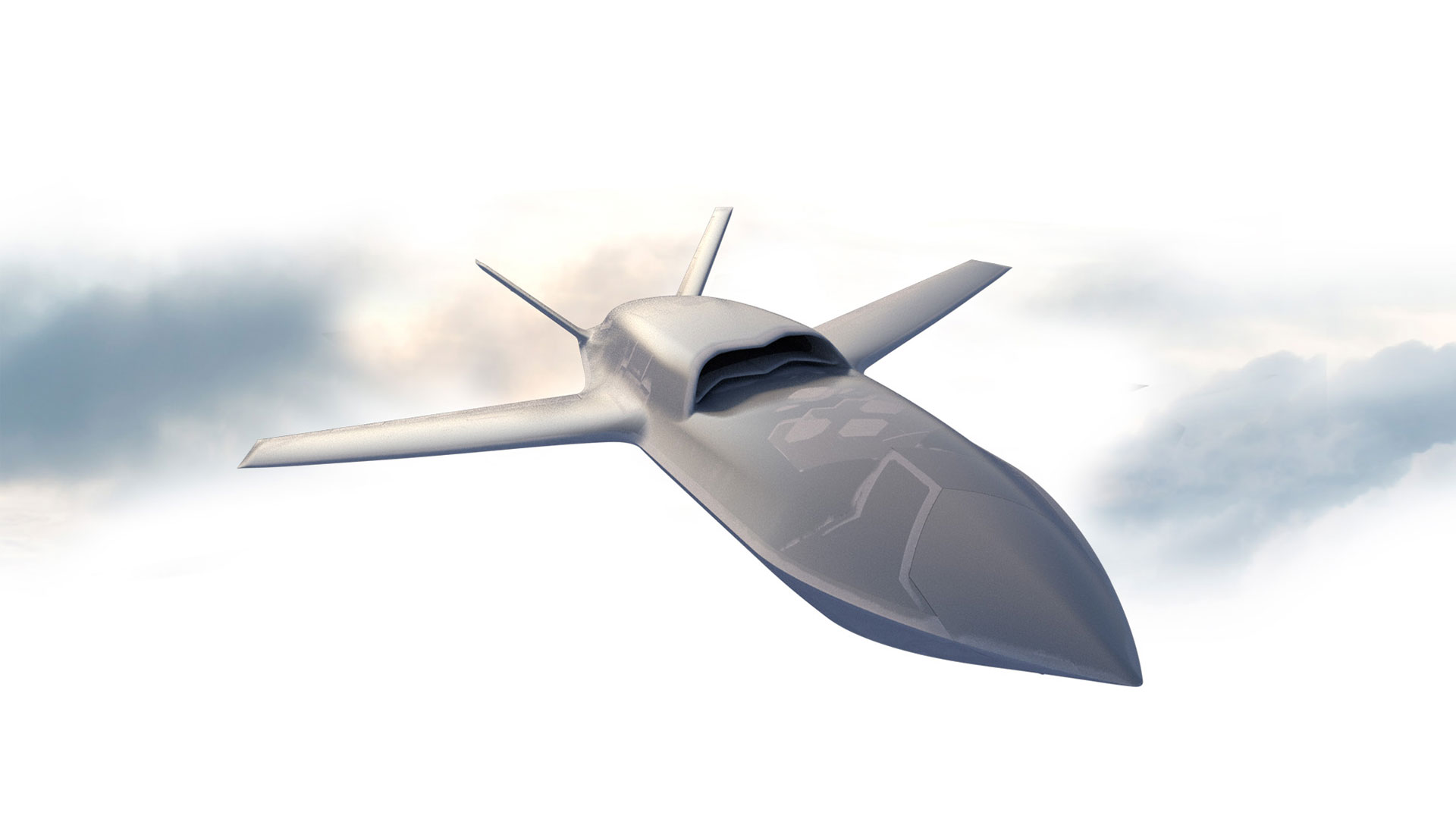UAV.com Staff Report
Air superiority always has been the foundation of American power — but after so many decades, the structure is weakening.
In the old days, the United States overmatched its enemies by fielding greater numbers of qualitatively superior combat aircraft, flown by the greatest pilots in the world, who counted victory in ratios of many hostile jets destroyed for every one American. Or, in ideal cases, no American losses at all.
Today, however, advanced adversaries are fielding combat aircraft at a scale the United States can't match. There aren't enough fighter pilots, dollars in the budget, or days in the year to take the lead by playing this game the old way.
That's why the U.S. Air Force is playing a new way. Rather than attempting to design, build, and field many copies of an advanced new fighter while also recruiting and training huge numbers of highly skilled pilots, the Pentagon has decided to make each member of its corps of pilots much more effective. The answer is to give them Collaborative Combat Aircraft, or CCAs.
The Collaborative Combat Aircraft is a large jet-powered uncrewed combat aircraft. Using high degrees of autonomy under the supervision of human pilots and other commanders, it flies alongside, or well ahead, of traditional fighter formations. CCAs work together and with traditional aircraft to sense what's happening, create new tactical options, and take risks on behalf of the air wing, protecting the human pilots.
Getting CCAs into serial production lets the Air Force and its partners field these aircraft in larger numbers quickly, greatly making up the shortfall in traditional human-flown combat aircraft. They have no need for a traditional pilot training pipeline, and they can operate without concern about human casualties or prospective prisoners of war.
And because CCAs work together in large networks of aircraft — both unmanned and legacy fighters and other crews in the battlespace — they give the joint force capabilities that it has never had before.
Having established the clear appeal of the CCA concept, the United States now faces the choice about which specific aircraft to build. Fortunately, that also has a clear answer — the solution that brings agility and pedigree to the table: the CCA from General Atomics Aeronautical Systems, Inc.
GA-ASI is the world leader in unmanned aviation. Its Predator®, Reaper®, Gray Eagle, and Avenger® aircraft have recorded more than eight million flight hours over more than 30 years. They are the most operationally available aircraft in today's military, and they have rewritten the practices of intelligence, surveillance, reconnaissance, and much more.
This experience matters because CCA is a high stakes effort. It's essential to the future of American power. This isn't the time to try out a newcomer, sit back, and see what happens. The team that builds the aircraft must have a solid track record of designing, testing, fielding, and sustaining real combat aircraft in relevant quantities.
GA-ASI not only has all that, but it is also the current leader in another critical technology that will enable CCAs: autonomy.
This describes the software and aircraft integration that lets an aircraft do things on its own that once would have required control by a human pilot, either in an onboard cockpit or from a remote ground control station. Over several years and thousands of hours of safe operations, GA-ASI's Avenger unmanned jets have defined what's next for autonomous combat aircraft.
Avenger has shown it can operate against both real flying and computer-simulated threats, integrate with other unmanned jets and human-crewed ones, adapt in real time to unplanned changes in the operating environment, and much more. Avenger proves that GA-ASI can deploy the artificial intelligence, machine learning, and autonomy features necessary to make the most of its own class-leading aircraft hardware. And it's just one of two unmanned combat jets from GA-ASI that are flying right now, today. Some contenders have exactly zero.
All these factors combine to make GA-ASI's CCA solution the most capable, lowest-risk, and quickest-to-field option. But a word here is necessary about what CCA must not become: exquisite.
When a city police force needs a new fleet of cars, it doesn't buy Lamborghinis. When a fire department needs new uniforms for paramedics, it doesn't order them from Louis Vuitton. The Pentagon and Congress must guard against calls for gold-plated, increasingly expensive CCAs that defeat some of the key principles of this effort.
Escalating the capabilities, features, and therefore costs of these aircraft will reduce the number the Air Force can afford. It will make the joint force more risk averse in deploying and operating them. The United States would wind up right back where it started: with a small cache of silver bullets that constrains, rather than empowers, what the U.S. and its allies can do.
Today's challenge for Washington not only is to build CCAs but to build the right CCA — affordable, low-risk, quick-to-ramp, and highly capable without any boutique fussiness. With its proven aircraft, agility, and pedigree, GA-ASI is the one poised to deliver.
